Guadeloupe’s Only Travel Guide You Need For A Great Trip in 11 Easy Steps
- Destinations Americas
Cruisit Team
- October 10, 2022
- 0
- 4907
- 71 minutes read
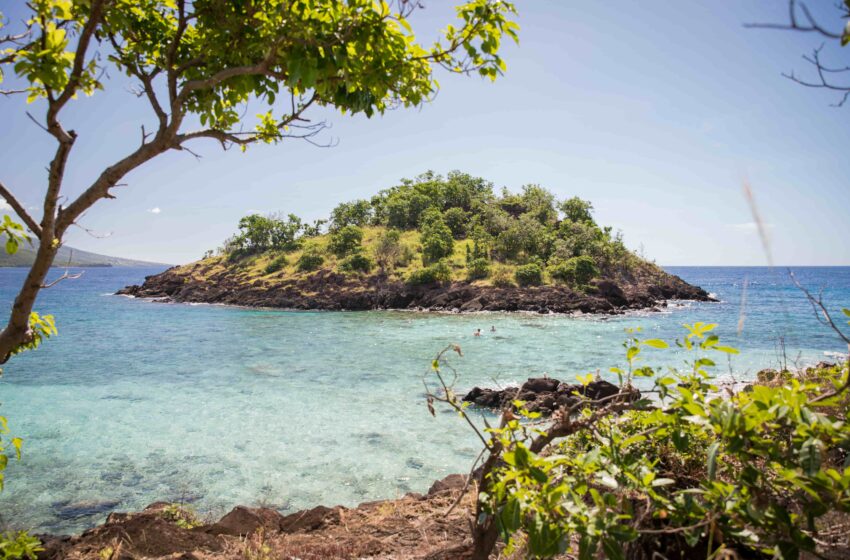
Several archeological findings date Guadeloupe’s early human inhabitants back to at least 3000 BCE. Later followed by farmers and fishermen from the nearby Orinoco basin known as the Arawak Indians moved there from what we know today as Venezuela. Carib Indians, originally from the same area, arrived about the 8th century and quickly ousted the indigenous peoples of the Caribbean. Their language, the Carib language, is responsible for giving Guadeloupe its name, Karukera, which means “the island of lovely seas.” Christopher Columbus, the Spanish sailor, arrived in Saint-Mary, on the island he would later rename Guadeloupe after the Santa Maria de Guadalupe monastery in Extremadura, in November 1493. On three separate occasions, in 1515, 1520, and 1523, the Caribs successfully repelled Spanish troops and settlers. Still, on June 28th, 1635, the French, not the Spanish, conquered the island and established sovereignty after driving out the indigenous peoples. After then, sugar cane became the crop of choice for the colonizers. Slaves were brought from West Africa to the Caribbean to provide the labor necessary to achieve this goal.
Pierre Bélain, Sieur d’Esnambuc, a Frenchman who founded a trading enterprise in 1626, successfully expelled the Spanish who had colonized the shore. The French colonizers arrived and set up more colonies and fought the Carib Indians until 1640, after which the settlement flourished. The slave trade brought in workers who would work the sugar, coffee, and other plantations in 1644. The failed colonization attempts by chartered firms led the French government to take control of Guadeloupe in 1674, since then, it remained in French hand most of the time. Guadeloupe had a rough go of it in the 18th century. During the Seven Years’ War, the British occupied the region from 1759 to 1763 before ceding it back to France under the Treaty of Paris. The British occupied the region again in 1794, but were driven out by Victor Hughes, who announced the abolishment of slavery. Delgrès, Ignace, Solitude and their companions, are all names recorded in the islands’ history for their heroism in facing Bonaparte’s attempt to reinstate slavery. Slavery was officially abolished in 1848. In the 19th century, plantations began hiring indentured servants from India to make up for a shortage of local labor. By the 20th century, Guadeloupe became a French Overseas Department. Since then, several independence movements emerged, however, de Gaulle’s appeals managed to overcome the separatists and convince them to stay within the French Union giving the island more local control. From the 1970s to the 1980s several violent acts like bombings on the island and in Paris were part of a Caribbean independence movement, which granted the island the status of a French region in 1974. More reforms and local responsibilities were granted.
Guadeloupe, named by Christopher Columbus, is a Caribbean island in the Lesser Antilles surrounded by the Atlantic Ocean and the Caribbean Sea, consisting of two main islands that create a butterfly-like shape, referred to as Grande-Terre and Basse-Terre, respectively, and both have a capital in the form of the city of Basse-Terre. But the region is also made up of smaller islands which are La Désirade, Marie-Galante, Petite-Terre, and Les Saintes. The French Caribbean archipelago, made of idyllic islands, is the perfect place to experience the sailing lifestyle. A hotspot for yachting enthusiasts thanks to its favorable weather and winds year-round. With its clear blue seas and verdant hills, Guadeloupe is a prime spot for a Caribbean vacation. The island is well-equipped with modern amenities and offers delicious a delicious cuisine blend, lovely architecture to admire, and fascinating history.
Gwada, as the locals call Guadeloupe, sees people of Arawak, Carib, African, and Indian origins, making it a highly diverse region. The Memorial ACTe cultural center, preserves the memories of these enslaved and indentured servants who worked the plantations. A hidden gem, Guadeloupe, the land of beautiful waters, like the original inhabitants, called it, Karukera. The culture of the islands is well-preserved, as is its incredible ecology since international tourism didn’t catch up to the island, yet, making it the Caribbean’s best-kept secret, despite its booming popularity. Home to some of the most beautiful beaches in the region from powdery white sands to mud-filled swimming holes to treat your skin. However, aside from its beaches, Guadeloupe is home to a wealth of wildlife and nature. Enjoy stunning waterfalls, miles of hiking paths, and an active volcano with hot springs in Guadeloupe National Park.
The island wasn’t designated a Biosphere Reserve by UNESCO for no reason. As Guadeloupeans are passionate about conserving the natural environment and working to ensure that the island’s natural resources and beautiful wildlife remain intact, making the island pristine and unspoiled. Everyone can find something to love on these stunning islands. If you want to dive, Guadeloupe is the perfect place to learn. The island is surrounded by seas of exceptional clarity since they are part of the Grand Cul-de-Sac Marin Nature Reserve. Guadeloupe is home to some of the world’s greatest divers, with exciting dives that will both acquaint novices with the underwater world’s wonders and test the expertise of seasoned divers.
“A real, shiny tropical paradise full of wildlife left and right. Its picture-perfect shore is a safe haven for turtles laying their eggs. Flanked by silky sands that tingle the feet, and the generosity of the Guadeloupean people that will have you yearning to return to Gwada, as the locals call it.”
With more than 260 species of animals that you can spot on the island’s lands or the surrounding waters, you will be amazed by the variety and the diversity. Watch Killer Whales, Dolphins, and Humpbacks in the pristine waters, spot Snowy Egret swifting around the clear skies, and Leatherbacks laying their eggs on the lovely shores. If you’re a birdie, you will love the variety of birds that you can spot, ranging from Cedar Waxwing, American kestrel, Merlins, and Scarlet Tanager, but also lovely Flamingos, to name a few. From the cleanliness of the water, and the sense of calm that will wash over you as you float around. It’s incredible how simple it is to witness the underwater world’s marvels, and it’s an exhilarating experience to do so as both the Atlantic and the Caribbean surround the land.
The fusion of Creole, French, Indian and African traditions on the islands results in vibrant and entertaining music, festivals, like the Goat Festival in April, and a great variety of food to try. It would be a shame to visit Guadeloupe and not try the local street food, such as bokit and accras. This diversity is what makes Guadeloupe shine compared to other Caribbean islands. The intertwined culture makes up for a great experience to seasoned travelers, or novice ones alike.
The kind and welcoming inhabitants of Guadeloupe are even more inviting to the beautiful islands. The islands’ rich ethnic diversity makes up their folklore, stories, and much more. France, Africa, and India, as well as its Caribbean neighbors, have all left their mark on the country’s art, music, dancing, and culinary traditons.
Staying on the move will allow you to take advantage of all that Guadeloupe has to offer visitors. This Cruisit Guadeloupe travel guide provides an itinerary that strikes a balance between leisure and exploration. Arrive in this untapped tropical paradise near the Caribbean side of South America, with a colonial vibe, and enjoy it to the fullest. The following itinerary for Guadeloupe is tailored to the country’s peak tourist season but can be enjoyed during the shoulder months. With days spent in ancient parts of town in the company of legend, or surrounded by lush peaks and dramatic picture-perfect scenery, and hundreds of species to spot while you explore on your hikes, Guadeloupe will fulfill your wildest dreams.
Moreover, we will provide you with all the information you need to go across Guadeloupe with ease by providing you with a comprehensive travel guide. As you read on, you’ll learn about the best of what Guadeloupe has to offer—its towns, sights, transit options, and more. If you’re pumped up enough, then let’s get started!
- Explore the National Park of Guadeloupe
- Learn about the culture in the Memorial ACTe cultural center in Pointe-à-Pitre.
- Canoe the Mangroves in Guadeloupe
- Hike the Trece Dec Felices
- Admire the Breathtaking Scenery from Pointe de la Grande Vigie
- Beaches like Plage de Babin and Plage de Grande-Anse are among the best in Guadeloupe.
- Sail looking at the beautiful sunrise to Les Saintes
- Enjoy the evening with a cruise to Deshaies.
- Treat your taste buds with several fine dining establishments, such as La Touna and Loceane, that have picturesque settings.
- Stroll through Sainte-Anne, the Village Artisanal, or L’Amer.
- Experience a Breathtaking Sunset in any of the pristine beaches around
- Relax at a Spa after a long hike
- Enjoy the Sight of the Atlantic and Caribbean Seas
- Meet some adorable animals
- Discovering the French and Caribbean influences at Point-a-Pitre, Grande-Terre
- Guadeloupe National Park is almost 12,000 acres of hiking paradise.
- In the Parc Archelogique des Roches Gravees, seeing an Arawak Indian rock sculpture.
- Traveling to the Guadeloupean island of Terre-de-Bas, known for its coffee plantations and quaint medieval towns.
- The ascent to the peak of the still-active volcano LA Soufriere.
- Scuba diving and snorkeling at world-famous spots like the Pigeon Island Reserve Cousteau off the coast of Basse-Terre.
- It is recommended to rent a car in advance if you intend to go around by car, especially in the peak season
- Since cellular phone service is not available in the airport, you’ll need to rely on an offline map.
- Studying some French will serve you well, as it is the de facto language of communication in Guadaloupe. Creole is the second language.
- You should bring an umbrella just in case.
- On this island, parking is often easy and convenient.
- Travelers from the European Union should just provide a valid photo identification card at the airport (but do get your passport of course)
- Guadeloupe uses the Euro as its legal tender.
- There is no need to worry about becoming sick by drinking tap water, although the flavor may be different.
- There are no serious health issues to worry about, however hepatitis A and B immunizations are recommended.
- Travelers frequently contract tropical fevers like chikungunya and dengue.
- Traveling to Guadeloupe is totally risk-free
- The island is home to a variety of natural hazards, including volcanoes, storms, marine critters like jellyfish and urchins, and the most unpleasant of all, mosquitoes, so be sure to pack accordingly. Trees such as manchineel and castor oil plants and jequirity beans should be avoided because of their potential toxicity.
- The island’s population is known for its friendliness and helpfulness, but as night falls, it’s best not to venture out unaccompanied.
Crime & Scams in Guadeloupe
While the island’s crime rate has seen an uptick recently, it generally remains low. Pickpocketing and handbag snatching are common types of crime that can negatively impact tourists anywhere, including Pointe-à-Pitre. While armed robberies and other acts of violence are extremely unusual in Guadeloupe, you should still be on guard against the more typical forms of theft and other criminal activity.
Violence against tourists is uncommon in Guadeloupe, thus single women visitors should feel comfortable exploring the nation.
Be especially cautious if you are in public places frequented by foreigners, near official buildings, popular tourist sites, or on public transit. Avoid going to slum regions of the city. Take extra precautions on city streets, especially after dark or if you are alone. Carry no significant sums of money or wear expensive watches or jewelry. Avoid using your phone while walking down the street.
Healthcare in Guadeloupe While Traveling
Availability of primary care physicians (PCPs) and other forms of general medical treatment in Guadeloupe are both excellent and on par with the quality of care provided in France proper. While specialized care is available, it’s important to remember that not all doctors here are fluent in English. Also, you should be aware that you will likely be responsible for paying for any medical treatment you receive as a tourist, as you will not be eligible for universal coverage.
Before every trip, make sure you are up to date on all routine vaccinations. Among the key recommended vaccines globally are yellow fever, chickenpox (Varicella), diphtheria-tetanus-pertussis (DTP), influenza (flu), measles-mumps-rubella (MMR), polio, hepatitis, typhoid, and shingles. If you will be in contact with wildlife, you may want to consider getting a rabies vaccination.
When visiting Guadeloupe, you are legally required to purchase travel medical insurance. So, it is always important to have comprehensive medical coverage when traveling because you never know what you could encounter while overseas, especially if in the event of an emergency, a medical evacuation is a must for your safety.
Only eat foods that are cooked and served hot, avoid food that has been sitting on a buffet, and eat raw fruits and vegetables only if you have washed them in clean water or peeled them.
Only drink beverages from factory-sealed containers, avoid ice because it may have been made from unclean water, and only drink pasteurized milk.
Wash hands often with soap and water for 20 seconds, especially after using the bathroom and before eating. If soap and water aren’t available, use an alcohol-based hand sanitizer that contains at least 60% alcohol. Also, keep your hands away from your face and mouth.
Although Guadeloupe may be visited at any time of the year, the weather and other aspects of the island will change depending on the time of year. Since it is in the Caribbean, the weather is tropical and subject to the effects of the trade winds. The two primary seasons are the rainy and dry ones. There are two brief interludes between the rainy and dry seasons, which extend from July to December and January to June, respectively. A year-round warm destination, with year-round average temperatures of roughly 26°C, peak temperatures of around 32°C, and almost never dipping below 20°C. French Europeans make up the bulk of the islands’ tourists. Because the water temperature stays between 24 and 29 degrees Celsius all year long, you may go swimming or surfing in the ocean whenever you choose. On the other hand, the dry season is the perfect time to visit Guadeloupe.
Shoulder Season
If you want to avoid the crowds of both the high season and the ghost town of the low season, the shoulder season in Guadeloupe is the best time to go. The shoulder seasons occur in June and November. Temperatures in Pointe-a-Pitre, Guadeloupe, ranging from an average low of 24 degrees Celsius to an average high of 31 degrees Celsius in June, the first month of summer. Pointe-a-Pitre, Guadeloupe, experiences its longest days in June. The weather in Guadeloupe may range from 22 degrees Celsius to 33 degrees Celsius, depending on the time of day and where you are. A excellent time to visit Guadeloupe is in November, which is just before the busy season begins. There are fewer people and lower lodging and airfare costs between June and November.
High (Peak) Season
During the months of December through May, when daily highs average in the mid-20s, Guadeloupe is at its most pleasant and welcoming. Even though the weather is mild all year, August and September are peak storm months, which might derail your vacation plans. This is a significant holiday season, as both Christmas and the winter break fall within it. In Guadeloupe, the dry season has the best weather. This is Guadeloupe’s busiest tourist season, therefore rates will naturally be higher. Also, peak season is often the most expensive time to fly to the island. If you want to save money and increase your chances of finding available rooms and flights, planning ahead is a good idea.
Off-Season (Low Season)
The wet season in Guadeloupe lasts from July through October, and is the off season for the island. During this time, rain falls nearly every day, yet you can see the sun breaking through the clouds. July through October may be the least popular period of year for travelers, but there are several advantages to visiting then. There won’t be many other people on the beaches at this time of year. Since most visitors avoid the islands at this time of year, you may also get excellent hotel and airline rates. After the clouds clear, you’ll still have around 11 hours of daylight, which is plenty of time to bask in the sun. The primary drawback is the fact that your hikes will be muddy.
By Plane
The airport most convenient to the majority of Guadeloupe’s population is called Guadeloupe Pôle Carabes Airport. Direct flights to Pointe-à-Pitre depart from 18 airports around the world, serving 17 cities in 13 countries. Pointe-à-Pitre does not have any domestic flights at this time. Pointe-à-Pitre is serviced by 12 different airlines. Air Caraibes operates the vast majority of flights to Pointe-à-Pitre (PTP), linking six different airports to the city. You can generally get the cheapest flights leaving from Martinique.
By Boat
You may also take a boat from Martinique to Guadeloupe, with round-trip fares starting at €80 on the Express des Iles and €70 on Jeansforfreedom.
By Car
Traveling around Guadeloupe in a rented car could be extremely convenient. Traveling around the island in a loop is one of the most beautiful drives in the Caribbean, and it allows you to easily see both Grand-Terre and Basse-Terre. There are car rental agencies at the airport and in the vicinity of the major hotels, but you may want to avoid using the services of any unknown companies in order to avoid the hassle of dealing with unexpected mechanical breakdowns, shady billing practices, and insurance conflicts in the event of an accident. Renting from a major corporation like Hertz, Budget, or Avis is your best chance. Between March and early December, prices tend to drop by 20-25%, with the exception of the months of July and August.
In Guadeloupe, the majority of vehicles use manual transmissions (stick shift) and drive on the right. Because of the scarcity of gas stations, you should always have a full tank of gas and never get it lower than half. The mountain roads of Basse-Terre provide a number of obstacles, including tight turns and roundabouts. Highways may get muddy during the rainy season, therefore extra caution should be used while driving off the major roads. If you wish to go during the busiest times of the year, you might want to make reservations in advance. A valid driver’s license from the United States or an international driver’s license will do.
By Taxi
If you don’t hire a car, you’ll have to take a taxi from the airport, since there are no other transportation methods. Cab fares tend to be approximately 50% more at night and early in the morning. The taximeters may or may not be functioning in some of the cabs. In other words, you should always settle on a fare before getting into a cab. You should expect to pay around €20 to go from the airport to anything in Pointe-à-Pitre, or €25 to the hotels in Gosier. It is possible to spend over 200€ for a 7-hour taxi ride if you need one for the entire day. This may be a very convenient means of traversing the island.
By Bus
Most outlying communities may reach Pointe-à-Pitre by using one of the numerous local buses. But you might need to know a little French to navigate the system. The Gare Routière de Bergevin is the bus terminal from which trips to all destinations in Basse-Terre originate in Pointe-à-Pitre. Take a bus to the northern portion of Grande-Terre from Gare Routière de Mortenol. The southern half of Grande-Terre is serviced by buses leaving from the prolongement (extension) of the Marché de la Darse. The hours of operation are from 5:30 am to 7:30 pm everyday, with service being intermittent and unpredictable at times. No bus line operates between the airport and Pointe-à-Pitre. It would cost about 5 euros to get around the whole island. Taxis are a convenient option for many travelers, especially for their initial transportation throughout Guadeloupe.
By Boat
Guadeloupe’s islands are conveniently positioned within a boat ride of no more than forty-five minutes from one another. Moreover, round-trip tickets start at only 25 Euros (about $27). Multiple ferry companies go between Grande-Terre and Basse-Terre and the islands of Marie-Galante, Les Saintes, and La Désirade every day. From Pointe-à-Pitre, you may take the round-trip L’Express des Îles ferry to either Marie-Galante or Terre-de-Haut, the two largest and most populous islands in Les Saintes. Check L’Express des Îles’ website for up-to-date pricing and departure times.
SIM Cards & Calls in Guadeloupe
Digicel and La Poste Carabe Mobile sell Guadeloupe SIM cards in their retail locations and through resellers for 10 EUR (11.30 USD), whereas Orange and SRF charge 15 EUR (17 USD) for its SIM cards. Pointe-à-Pitre (Le Raizet) International Airport (PTP) does not offer SIM cards, however the nearby Centre Commercial Milenis mall does. SIM cards for use in Guadeloupe may be purchased at the official stores of Digicel, Orange, SFR, and La Poste, as well as from select resellers such as electrical retailers. You can’t get them at Pointe-à-Pitre (Le Raizet) International Airport (PTP), but you can in the Centre Commercial Milenis shopping center. If you’re just going to be in the area for a week, you can acquire 1 GB of data from Digicel for 5 Euros, or 10 GB from Orange, for the same price.
Alternatively, you may also get a prepaid eSim card from companies like Airalo, SIMCorner, HolaFly, or Nomad. All the providers offer data-only plans that may be used with an eSim-enabled phone, so make sure your phone is compatible. It is also possible to sign up for a Solis WiFi Hotspot. Check before you travel because they only serve select areas. Airalo provides the most extensive coverage of over 180 nations.
Local Internet & WiFi in Guadeloupe
It is estimated that over 66% of the population of Guadeloupe makes use of the internet in some capacity and on various devices. Broadband speeds in Guadeloupe may reach rates of up to 56 Mbps, while mobile connections can reach speeds of up to 40 Mbps. Good news: there are a few areas on the island where you can connect to free WiFi. Numerous restaurants, cafés, and hotels offer guests free WiFi while they are in town. It’s a safe bet to assume that your hotel of choice will have free WiFi, but double check just to be sure.
Top Places in Guadeloupe

La Soufrière
Every visitor’s guide to Guadeloupe is sure to include a stop at the La Soufrière Volcano, since it is one of the island’s most popular attractions, especially among active vacationers. In addition, its elevation makes it the highest point in the whole archipelago of the Lesser Antilles. Basse-Terre, Guadeloupe, is home to the Lesser Antilles’ highest stratovolcano at 1,467 meters. La Grande Soufrière erupted on February 8, 1843, after an earthquake. Seventy-two thousand islanders were evacuated in 1976 due to a series of earthquakes. The eruption in 1976 was not as disastrous as feared. Because of the thorough evacuation, no lives were lost. Assuming you get it to the other side of the volcano, you won’t be sorry you climbed for so long.
Guadeloupe National Park
Located in the Leeward Islands in the eastern Caribbean, Guadeloupe National Park is a French overseas department and national park. Together, the park and the marine protected area known as the Grand Cul-de-Sac Marin Nature Reserve are responsible for protecting the area’s marine ecosystem. The Guadeloupe Archipelago biosphere reserve includes all of these preserves.
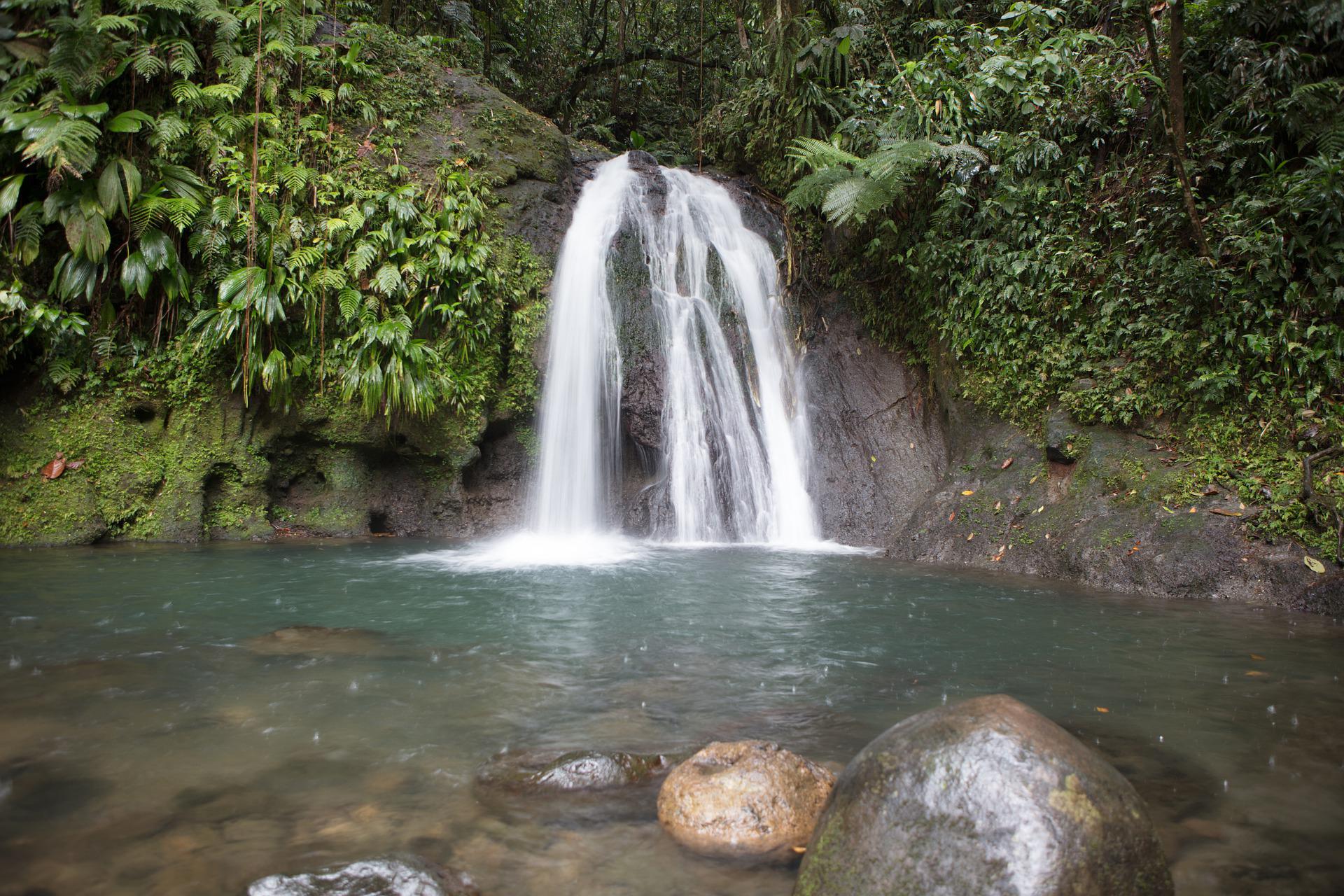

Jardin Botanique de Deshaies
Guadeloupe’s Jardin botanique de Deshaies is a beautiful botanical garden. They are open every day of the year from 9:00 am to 16:00 pm. Admission is €15.90 for adults and €10.90 for children, with discounts available for larger groups. Costs €8.40 per student. The 7-hectare plot features exotic plants from all corners of the globe. The Deshaies Botanical Garden is a large park with many different sights, sounds, and smells to enjoy. The island’s other must-see attraction. There, you may learn about and explore a wide variety of exotic plants and vegetation from all around the world. The garden’s residents, including the parrots, Koi carp, and goats, are quite charming, and you’ll have a great time interacting with them.
Carbet Waterfalls
Two of these spectacular waterfalls are visible from the ocean and provide for a great sight for sailors. More than a hundred meters separate Carbet Falls. The path to the second waterfall has been carefully maintained and is simple to follow. It makes it a pleasant vacation option for families taking their kids along. For the contrary reason, you’ll need to be in better shape and have more climbing experience before you take your first fall. For the most daring among us, it will be an exciting adventure.


Mémorial ACTe
The Mémorial ACTe is a museum dedicated to the memory and history of the slave trade in Guadeloupe and is a must-see for anybody interested in the island’s past. Slaves brought from Africa to Guadeloupe over the years were largely responsible for the island’s population boom. The contemporary Mémorial ACTe museum has a well-curated display on the global slave trade. Pointe-à-Pitre is the largest city in Guadeloupe, and a vacation there would not be complete without some time spent roaming about its historic downtown. While I didn’t find the city itself to be particularly attractive, I did see several historic buildings that harkened back to the colonial era.
7-day Itinerary in Guadeloupe
Day 1
Arrive in Basse-Terre
The western Basse-Terre and the eastern Grande-Terre of Guadeloupe make up a butterfly shape that is a bit too large to see in a week. To get to Ilet du Gosier from Marina Bas du Forte in Pointe-a-Pitre on Grande-Terre, you will first need to go a little distance southeast. There is nothing on this little island but a restaurant, sand, palm trees, and iguanas, but it is a safe place to anchor for the night. Clear and calm, the shallow waters in the island’s lee are ideal for swimming.
To see the waves smash in as they have for millennia, you’ll need to make your way to the windward side and across the sharp rocks. You should try the mahi mahi prepared in the traditional way, over a wood fire on the beach. There may even be a stand serving sorbet if you’re lucky. In addition, there is a lighthouse that may be climbed to provide spectacular views of the forest canopy below.

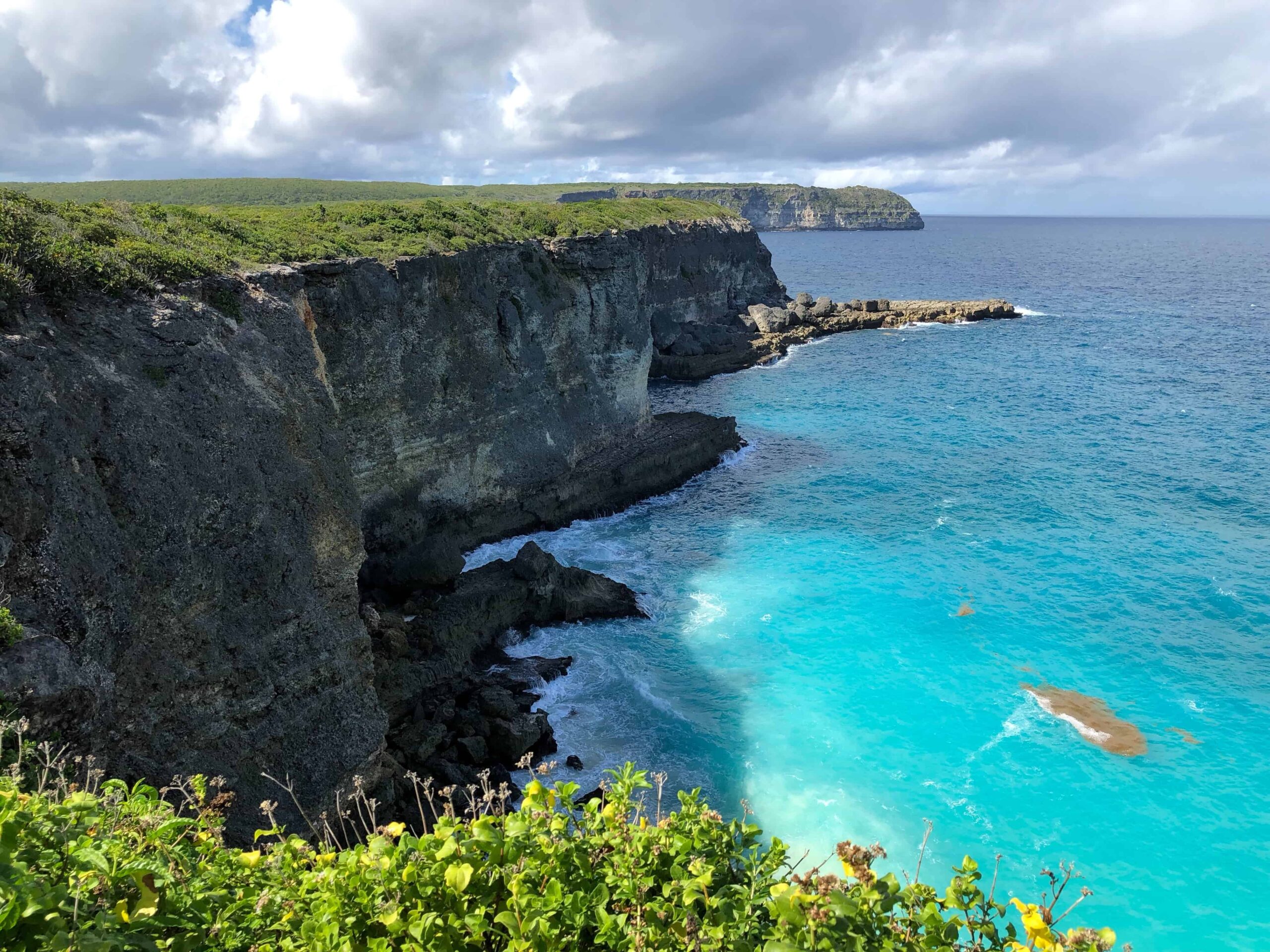
- Backpacker:
- Budget:
- Mid-range:
- Luxury:
La Creole Beach Hotel & Spa
Club Med La Caravelle - Guadeloupe
La Toubana Hotel & Spa
Le Relais du Moulin
Auberge de la Vieille Tour
Caraibes Royal
Mahogany Hôtel Résidence & Spa
When it becomes dark, a foreign city may be twice as dangerous - especially if you don't understand the language and are unfamiliar with the area. There is little reason to be alarmed about walking alone in the city since there low crime rate in Basse-Terre and some of the only crimes are pickpockets. You can walk safely at day, but be wary while walking at night and be alert in crowded areas or unlit alleys or streets. You can always take taxis, if you don't feel comfortable, Be wary of petty crime by taking precautions mentioned in the safety section above.
From the Airport to Basse-Terre's Center
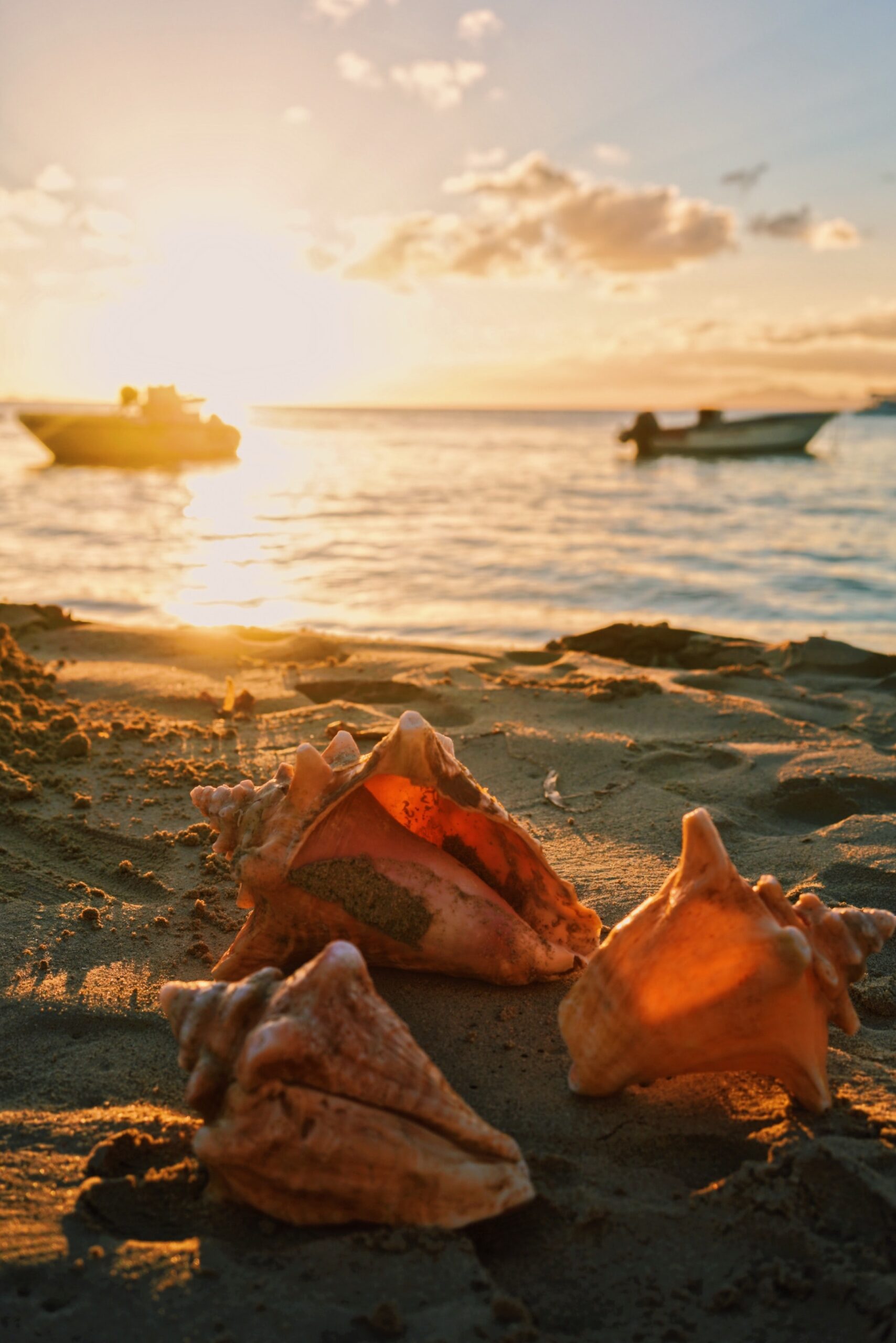
Day 2
Chilling at Marie-Galante
To the south of Ilet du Gosier, about 30 kilometers (19 miles), lies the enormous island of Marie-Galante, where you may drop anchor in about 5 meters (16 feet) of water at Baie de Saint-Louis. Clear, quiet water is guaranteed in anchorages that are in part shielded by coral reef systems. The dinghy may be left at the dock in front of the restaurants while you have a drink at one of the waterfront stalls or pubs.
The island’s rich history in rum manufacturing is reflected in the prevalence of sugar cane farms, distilleries, and historic windmills. Rent a scooter and zip around the island to see its many archaeological sites. Located north of Grand-Bourg, the Roussel-Trianon House is a former sugar factory where you can learn about sugar cane cultivation and the 1848 abolition of slavery. Panels detailing the history and routes of the slave trade are presented. You may see the site where freed slaves poured rum into Punch Pond to commemorate the end of slavery. La Feuillere beach is another great spot for kite surfers because to its flat seas and consistent easterly trade winds.
Day 3
Exploring Terre-de-Haut
Sailing from Marie-Galante to Terre-de-Haut, one of the islands that make up Les Saintes, the harbor at Anse du Bourg is a pleasant 29 kilometers (18 miles) away by your boat. A mooring ball can bring you closer to shore for €13, although you may anchor behind the mooring field for free. However, the wave can make it uncomfortable to stay there.
Authentic French cuisine like crepes, croissants, and baguettes are waiting for you, and the village has a really European feel. Hitchhiking is a frequent technique for island visitors to get to know the island and see the many beautiful beaches it has to offer. Villagers get around on mopeds, golf carts, or foot, and the lack of automobiles provides for pleasant window-shopping for trinkets or eating at sidewalk cafes. The sidewalks are populated by old women selling French pastries from handcrafted wicker baskets, and the symmetrical wooden homes are painted in vivid colors and decorated with pink hibiscus with hummingbirds. Stroll up the hill to Fort Louis for a breathtaking panorama of the harbor and a glimpse into the fort’s nautical history museum.
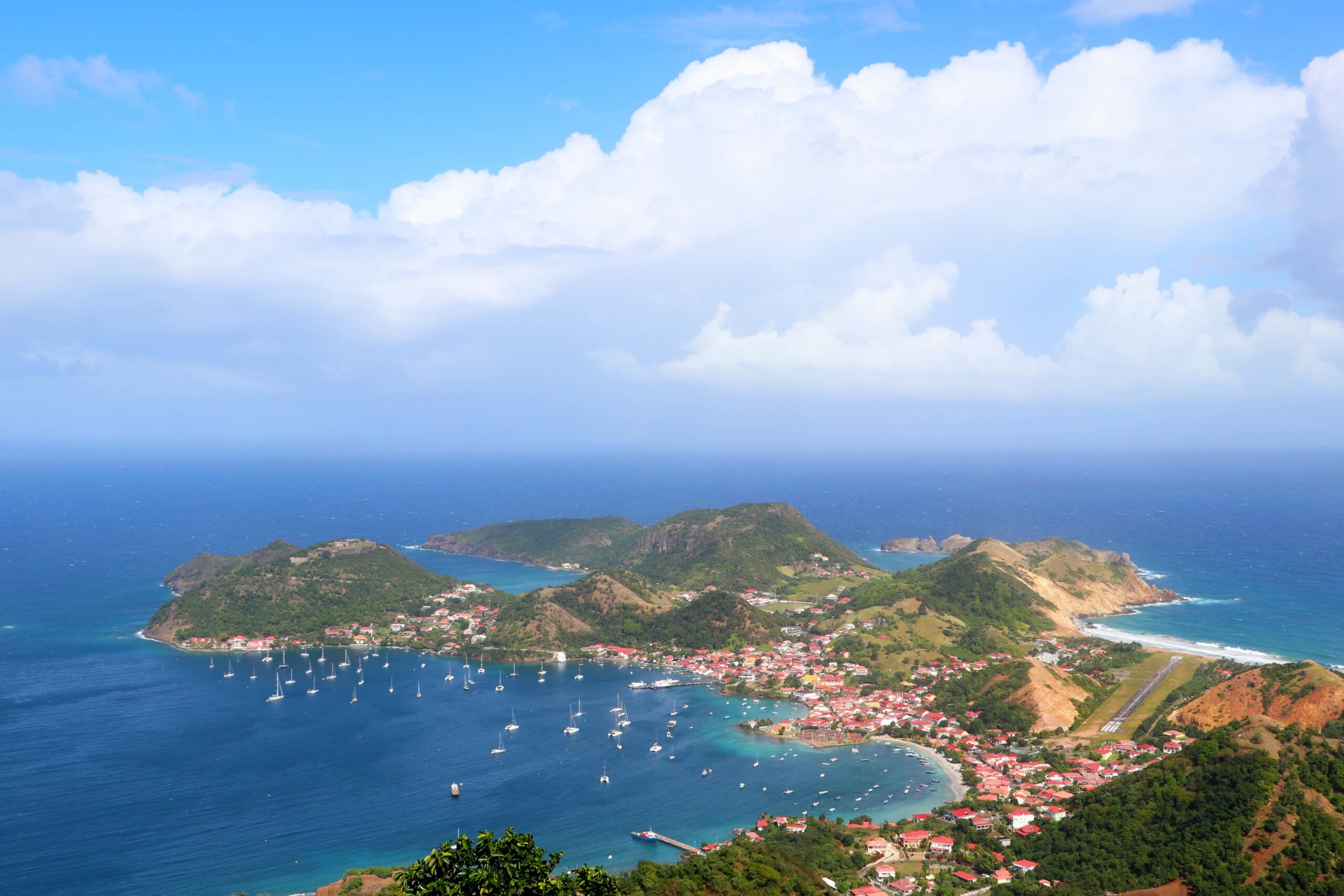
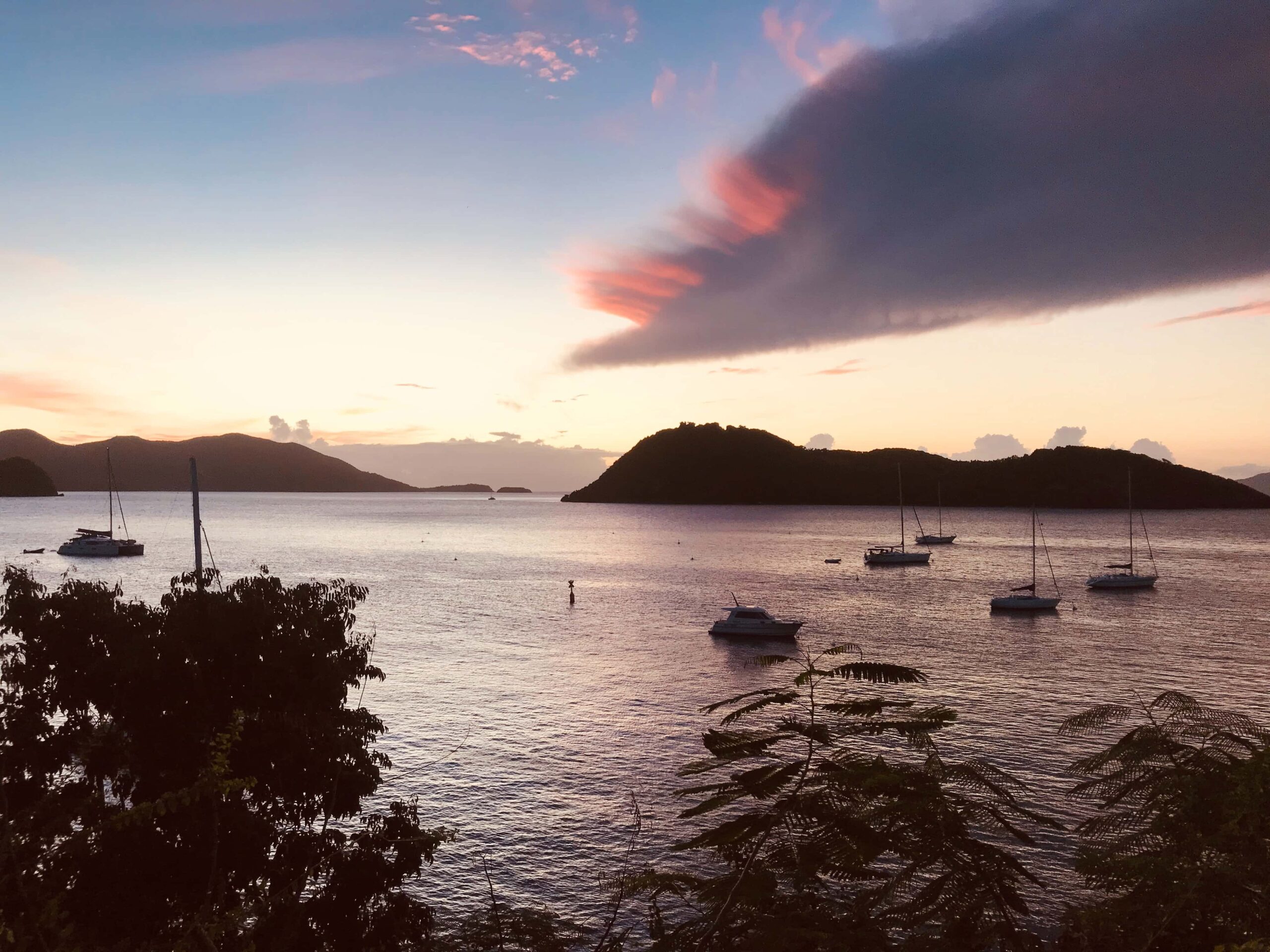

Day 4
Les Saintes
Even though it may be hard to leave Les Saintes, there is more to see, so head to Riviere-Sens, a peaceful mainland anchorage surrounded by verdant volcanic hills. Anchor in 6 m (19 ft) of water, then launch the dinghy to the marina so you may make the short journey on foot or by bus to the to the beach, or to the distillery.
Day 5
Lay Back
Anse a la Barque is a little fishing harbor approximately 16 kilometers (10 miles) northeast of Riviere-Sens where four guns from French ships destroyed in 1806 lay about 60 meters (200 feet) off the coast. Take the dinghy across to Petite Anse, where you can go rum punch sundowner hunting for conch shells in the calm seas and socialize with the locals at the beach bar.
Carbet Falls, located on the southern slopes of the La Soufriere volcano, is another great option. These waterfalls are so stunning that Christopher Columbus wrote about them in his ship’s journal in 1493. This natural wonder of the tropical rainforest consists of three different waterfalls, the tallest of which is 115 meters in height (377ft). The third is a difficult four- to five-hour hike away, but the reward is a beautiful circular basin with refreshingly chilly waters for a refreshing dip.



Day 6
Head to Pigeon Island
It is possible to reach Pigeon Island from Anse la Barque by traveling halfway up the western coast of Guadeloupe to the Reserve Cousteau. Pigeon Island is inaccessible from the beach, although a secure harbor named Plage de Malendure may be found about a kilometer off the mainland.
Drop anchor in 5 meters (18 feet) of water towards the northern end of this bay. With only a quick trip in the dinghy, you can reach one of the greatest places to go snorkeling in the region. The dive boat may either anchor to one of the mooring balls or be dragged ashore. Turtles, angelfish, parrotfish, butterflyfish, elkhorn, and staghorn corals await those who don fins, mask, and snorkel and explore the underwater world. Blue tang schools swim so close that you can almost touch them. The island’s interior is made up of huge rocks and open tunnels, both of which may be explored to find large, multicolored iguanas reclining in the trees.
Day 7
Last Hours…
You should go back to Pointe-a-Pitre now. One week aboard a boat might give you an appreciation for those who pack up their lives and set sail for the open sea. Living on the ocean is very different than living near it. You will come away from your time in the seas of Guadeloupe with a newfound respect for the ocean and plenty of sea tales to tell, as it is difficult to avoid developing a sense of awe and wonder for the vastness and power of this natural resource.
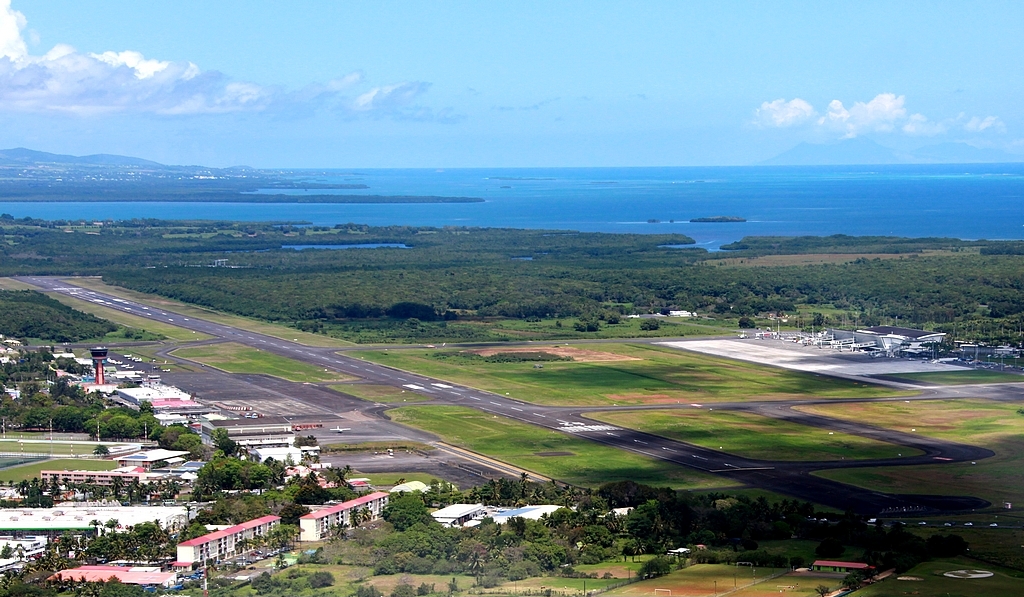
The Most Popular Food in Guadeloupe
The diversity of Guadeloupe’s culture and ethnic groups is evident, from its Creole culture to the French traditional culinary art. It dates back to the arrival of the first slaves from all over the world to the island. In light of this, Creole cuisine draws inspiration from a wide range of African, Asian, and European culinary traditions. Since French is part of the islands’ identity, you can indulge yourself in French cuisine too. The fusion of French, Indian, and African cultures, as well as the original Caribbean traditions gives Guadeloupe’s visitors a wide variety of dishes to explore. Since Guadeloupe is an island, seafood is the most common used meat in various dishes, and Mahi mahi, conch, land crab, and Caribbean lobster are just a few examples of the fresh seafood that you can try while on the island.
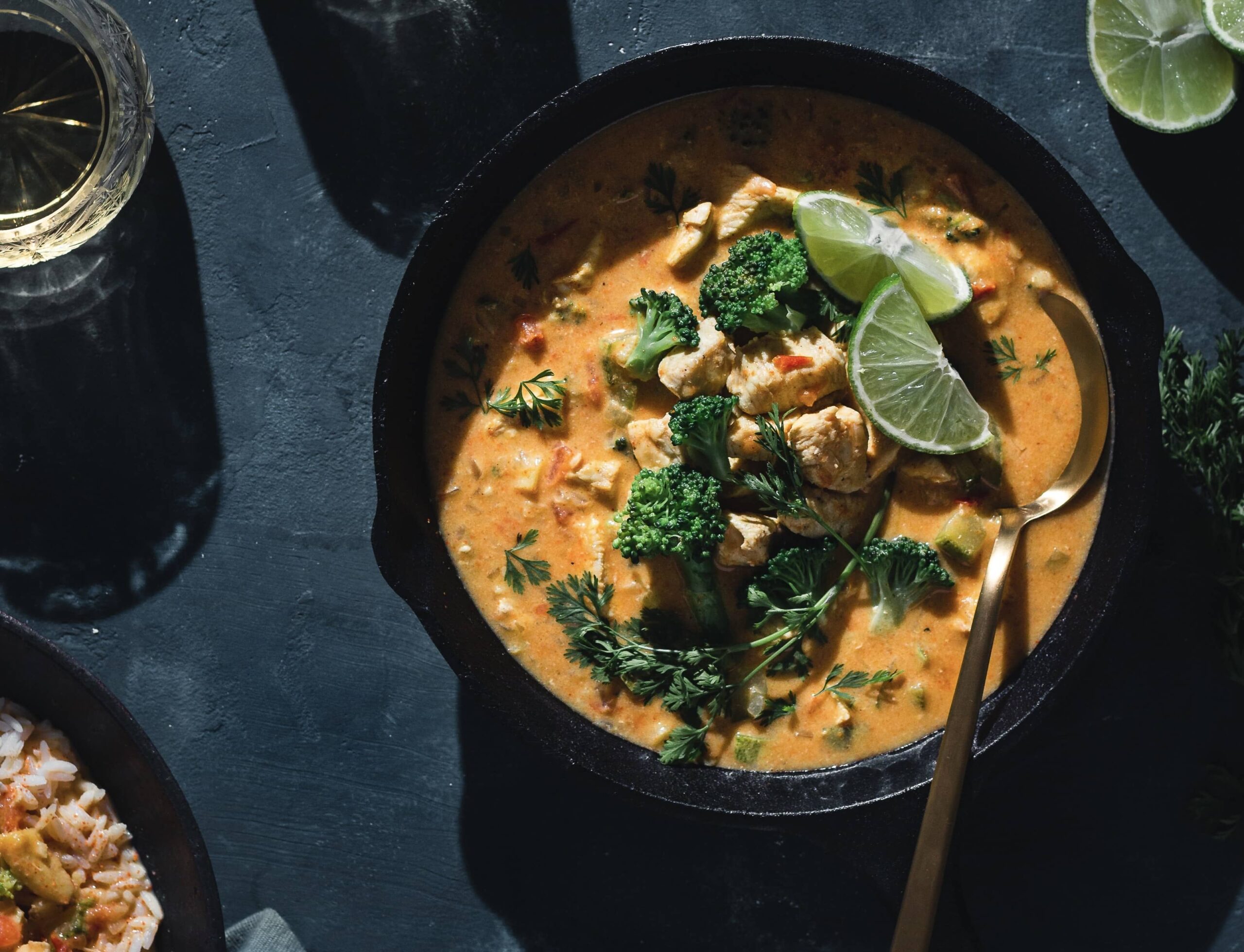
Colombo
A curry-like meal with an Asian heritage. Chicken or goat is marinated in a spicy sauce and served over rice as the most typical main dish. It may be found on the menus of nearly every restaurant on the island. Colombo powder is a blend of cumin, turmeric, coriander, and cloves, and is commonly used to season vegetables, meat, or fish in this Creole meal.
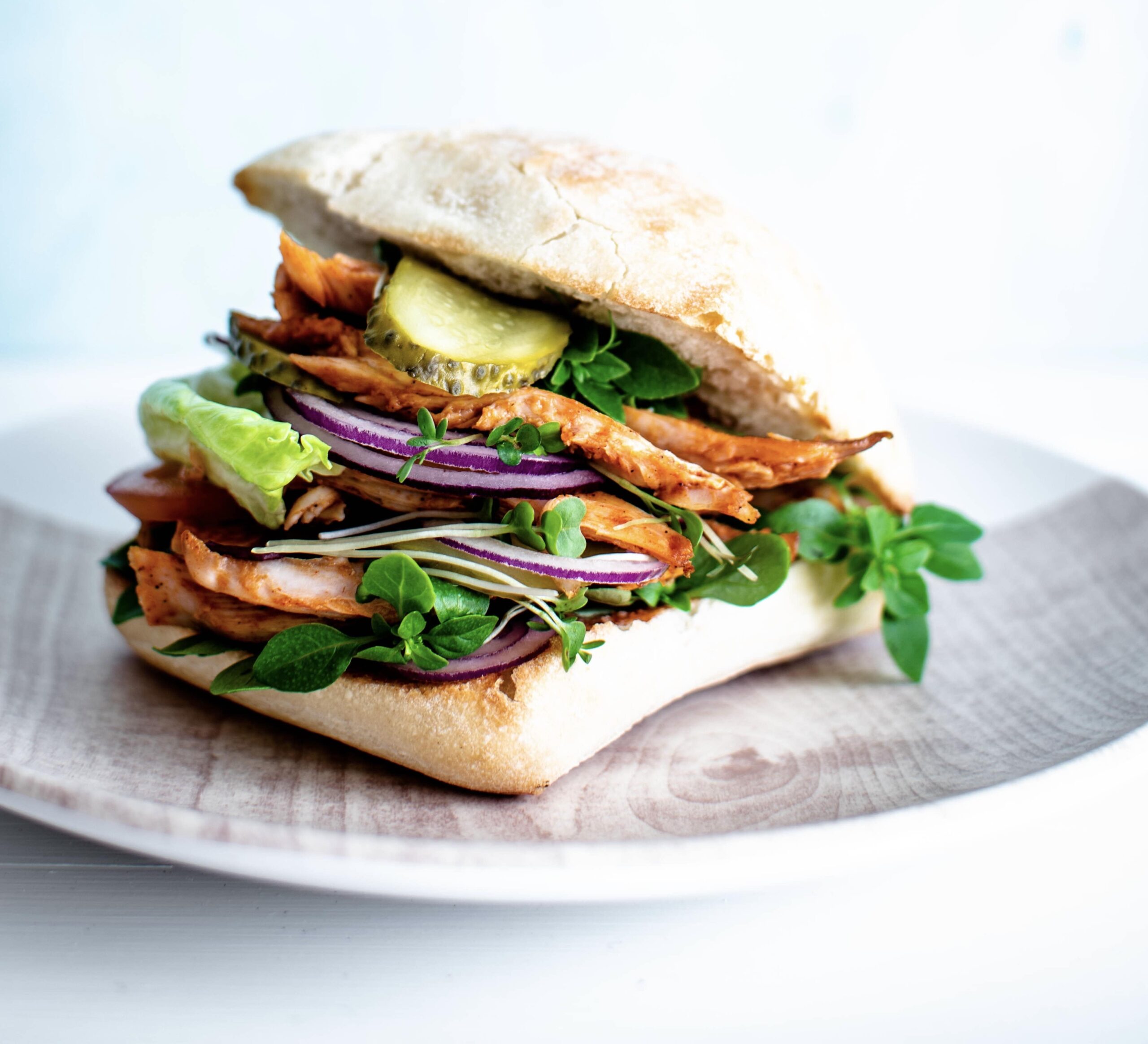
Bokit
One of the most common types of sandwiches sold on the streets of Guadeloupe. You may make a delicious white bun by flattening it and frying it in oil. Chicken, cheese, ham, egg, fish, and other proteins are just some of the options for toppings. This is a typical snack to purchase from a vendor on the street in Guadeloupe.

Tourment d’amour
No one but the French could possibly link sweets with emotional anguish. You have to give them credit, though; they picked a great name for this seemingly benign tart that will quickly become a favorite. Other tropical fruits, such as banana, guava, and pineapple, are equally as delectable as the traditional sweetened coconut that lays beneath the sponge cake in the tart’s flaky pastry base. The finest spot to sample the legendary dish tourment d’amour is on its purported birthplace, the island of Terre-de-Haut.

Accras
This is a starting dish that is often served in restaurants and is a very common street food too. Normal ingredients include fish, potato, and vegetable mince. The next step is to form the dough into little balls and fry them. This type of meal is commonly filled with fish, lobster, or shrimp.

Kassav
A pancake prepared with manioc flour doesn’t do much to stimulate hunger when eaten alone. But whether stuffed with savory (like salt cod) or sweet (like coconut, mango, or guava jam), it becomes a filling delight that is undeniably irresistible. In fact, you shouldn’t be shocked if you end up buying manioc flour to create your own version when you get back to your own country. If you want to see kassav being prepared, however, you should travel to Maison de la Kassaverie at Capesterre-Belle-Eau on the island of Basse-Terre Maison.
What's the Travel Budget for Guadeloupe
Flights
- Flights start at roughly $170 from nearby countries. Tickets however on average cost around $500 and can cost way more depending on which class and from which country you depart from.
Accommodation
- Nomad Backpacking style travelers can expect to spend around $200 for a week
- Budget travelers can expect to spend around $600 for a week
- Mid-range travelers can expect to spend around $900 for a week
- Luxury travelers can expect to spend around $5,600 for a week
Food Budget (Three meals and drinks)
- Nomad Backpacking style travelers can expect to spend around $25 per person per day
- Budget travelers can expect to pay around $30 per person per day
- Mid-range travelers on average would cost $35 to $45 per person per day
- Luxury travelers can expect to pay around $80 to $120 per person per day
Overall Budget Styles (Not including Flights, Tours, Transportation, or Car Rental)
- Nomad Backpacking style travelers can expect to spend roughly $400 for a week
- Budget travelers can expect to spend close to $1,000 for one person for a week
- Mid-range travelers can expect to spend approximately $1,500 for one person for a week
- Luxury travelers can expect to spend around $6,700 for one person for a we7
Flights
- Flights start at roughly $170 from nearby countries. Tickets however on average cost around $500 and can cost way more depending on which class and from which country you depart from.
Accommodation
- Nomad Backpacking style travelers can expect to spend around $200 for a week
- Budget travelers can expect to spend around $600 for a week
- Mid-range travelers can expect to spend around $900 for a week
- Luxury travelers can expect to spend around $5,600 for a week
Food Budget (Three meals and drinks)
- Nomad Backpacking style travelers can expect to spend around $25 per person per day
- Budget travelers can expect to pay around $30 per person per day
- Mid-range travelers on average would cost $35 to $45 per person per day
- Luxury travelers can expect to pay around $80 to $120 per person per day
Overall Budget Styles (Not including Flights, Tours, Transportation, or Car Rental)
- Nomad Backpacking style travelers can expect to spend roughly $400 for a week
- Budget travelers can expect to spend close to $1,000 for one person for a week
- Mid-range travelers can expect to spend approximately $1,500 for one person for a week
- Luxury travelers can expect to spend around $6,700 for one person for a we7
Flights
- Flights start at roughly $170 from nearby countries. Tickets however on average cost around $500 and can cost way more depending on which class and from which country you depart from.
Accommodation
- Nomad Backpacking style travelers can expect to spend around $200 for a week
- Budget travelers can expect to spend around $600 for a week
- Mid-range travelers can expect to spend around $900 for a week
- Luxury travelers can expect to spend around $5,600 for a week
Food Budget (Three meals and drinks)
- Nomad Backpacking style travelers can expect to spend around $25 per person per day
- Budget travelers can expect to pay around $30 per person per day
- Mid-range travelers on average would cost $35 to $45 per person per day
- Luxury travelers can expect to pay around $80 to $120 per person per day
Overall Budget Styles (Not including Flights, Tours, Transportation, or Car Rental)
- Nomad Backpacking style travelers can expect to spend roughly $400 for a week
- Budget travelers can expect to spend close to $1,000 for one person for a week
- Mid-range travelers can expect to spend approximately $1,500 for one person for a week
- Luxury travelers can expect to spend around $6,700 for one person for a we7
Flights
- Flights start at roughly $170 from nearby countries. Tickets however on average cost around $500 and can cost way more depending on which class and from which country you depart from.
Accommodation
- Nomad Backpacking style travelers can expect to spend around $200 for a week
- Budget travelers can expect to spend around $600 for a week
- Mid-range travelers can expect to spend around $900 for a week
- Luxury travelers can expect to spend around $5,600 for a week
Food Budget (Three meals and drinks)
- Nomad Backpacking style travelers can expect to spend around $25 per person per day
- Budget travelers can expect to pay around $30 per person per day
- Mid-range travelers on average would cost $35 to $45 per person per day
- Luxury travelers can expect to pay around $80 to $120 per person per day
Overall Budget Styles (Not including Flights, Tours, Transportation, or Car Rental)
- Nomad Backpacking style travelers can expect to spend roughly $400 for a week
- Budget travelers can expect to spend close to $1,000 for one person for a week
- Mid-range travelers can expect to spend approximately $1,500 for one person for a week
- Luxury travelers can expect to spend around $6,700 for one person for a we7
If you want to know what to pack, read this list below:
- This is a casual Island country with warm weather that tends to get hot in the summer and rainy in the winter, dress accordingly
- Raincoat or Light Waterproof Jacket
- Hiking Boots or Sturdy Sneakers (Shoes You Don’t Mind Getting Wet)
- Sunscreen
- Insect Protection – Repellent and Clothing
- Sunglasses and Sun Hat
- Water Shoes
- Beach Towels/Sarong
- Dry Bag
- Money Belt or Cross Bag
- Portable Medical Kit
- Flashlight or Headlamp
- Copies of your passport.
- Get all the needed vaccinations before traveling
- A power bank is a must in any travel.
- Always have some cash with you just in case there are no ATMs and if you are dealing with a business that solely accepts cash
- Get yourself an adapter for your gadgets
- 1 toothbrush
- 1 tube of toothpaste
- 1 razor
- 1 package of dental floss
- 1 small bottle of shampoo
- 1 small bottle of shower gel
- 1 towel
- Deodorant
- Band-Aids
- Hydrocortisone cream
- Antibacterial cream
- Earplugs
- Tylenol
- Hand sanitizer (germs = sick = bad holiday)
- A key or combination lock
- Zip-lock bags
- Plastic bags (great for laundry)
- Universal charger/adaptor
- LifeStraw (A water bottle with a purifier)
- 1 dry shampoo spray & talc powder
- 1 hairbrush
- Makeup you use
- Hairbands & hair clips
- Feminine hygiene products
Clothing For Boys
- 1 pair of jeans or khaki pants
- 1 pair of shorts
- 1 bathing suit
- 5 T-shirts
- 1 long-sleeved T-shirt
- 1 pair of flip-flops
- 1 pair of sneakers
- 6 pairs of socks
- 5 pairs of boxer shorts
Clothing For Girls
- 1 swimsuit
- 1 sarong
- 1 pair of stretchy jeans
- 1 pair of leggings
- 2-3 long-sleeve tops
- 2-3 T-shirts
- 3-4 spaghetti tops
- 1 light cardigan
Want to plan your own trip, here are some of the best resources that can help you
- Skyscanner – They search small websites and budget airlines that larger search sites tend to miss. They are hands down the number one place to start.
- Momondo – This is another favorite flight search engine because they search such a wide variety of sites and airlines. Always check here too.
- Booking.com – The best all-around booking site that constantly provides the most affordable and lowest rates. They have the widest selection of budget accommodation.
- Couchsurfing – This website allows you to stay on people’s couches or spare rooms for free. It’s a great way to save money while meeting locals who can tell you the ins and outs of their city. The site also lists events you can attend to meet people (even if you’re not staying with someone).
- Intrepid Travel – If you want to do group tours, go with Intrepid. They offer good small group tours that use local operators and leave a small environmental footprint.
- Grassroots Volunteering – For volunteering, Grassroots Volunteering compiles a list of good local volunteer organizations that keep the money within the community.
- Get Your Guide – Get Your Guide is a huge online marketplace for tours and excursions. They have tons of tour options available in cities all around the world, including everything from cooking classes, walking tours, street art lessons, and more! It has the world’s largest collection of things to do with more than 30,000 activities in 7500 destinations.
- SafetyWing – Safety Wing offers convenient and affordable plans tailored to digital nomads and long-term travelers. They have cheap monthly plans, great customer service, and an easy-to-use claims process that makes it perfect for those on the road.
- Trip Advisor: Check the reviews and then book your accommodation. TripAdvisor is where you go when you want to compare prices with multiple accommodation providers.
- VRBO: is the main search engine to use when you are looking for a home or apartment rental. It can sometimes be cheaper than hotels and it is the best way to stay in areas that offer a more local feel.
- Hostelworld: With one of the largest databases of hostels in the world, Hostelworld is the go-to site when you are looking for budget accommodation.
- Rome 2 Rio: If you want to see how to get somewhere by plane, train, bus, ferry, or car Rome2Rio lays it all out for you as well as related costs.
- World Nomads Insurance: When traveling you should always have travel insurance. We have found the best bang for your buck is by far World Nomads.
Final Thoughts on Guadeloupe
Guadeloupe is appealing for many reasons including its rich history and culture, which can be seen in its traditional buildings and rural landscapes, its unusual and beautiful landmarks, not to mention that the island is designated as a Biosphere Reserve by UNESCO. The unbelievable warmth the locals give and the warm weather, its exciting events and festivities, and its vivid picture-perfect surroundings of highlands and pristine waters, ideal for sunbathing and watching beautiful sunsets. Evidence suggests that Guadeloupe’s history extends back much further than 3,000 BC when it was first documented. A piece of a fallen Caribbean civilization and a meeting point for a number of different cultures; one of the top travel destinations. With its stunning scenery, wide variety of wildlife, and intriguing historical sites, Guadeloupe is quickly becoming a popular tourist destination, especially for its tropical activities that include kicking back at the pristine beaches or witnessing the beautiful sunsets of the Caribbean. Are you planning on going on a trip to Guadeloupe?
Have you ever been to Guadeloupe? Post your thoughts, questions, and concerns down below.